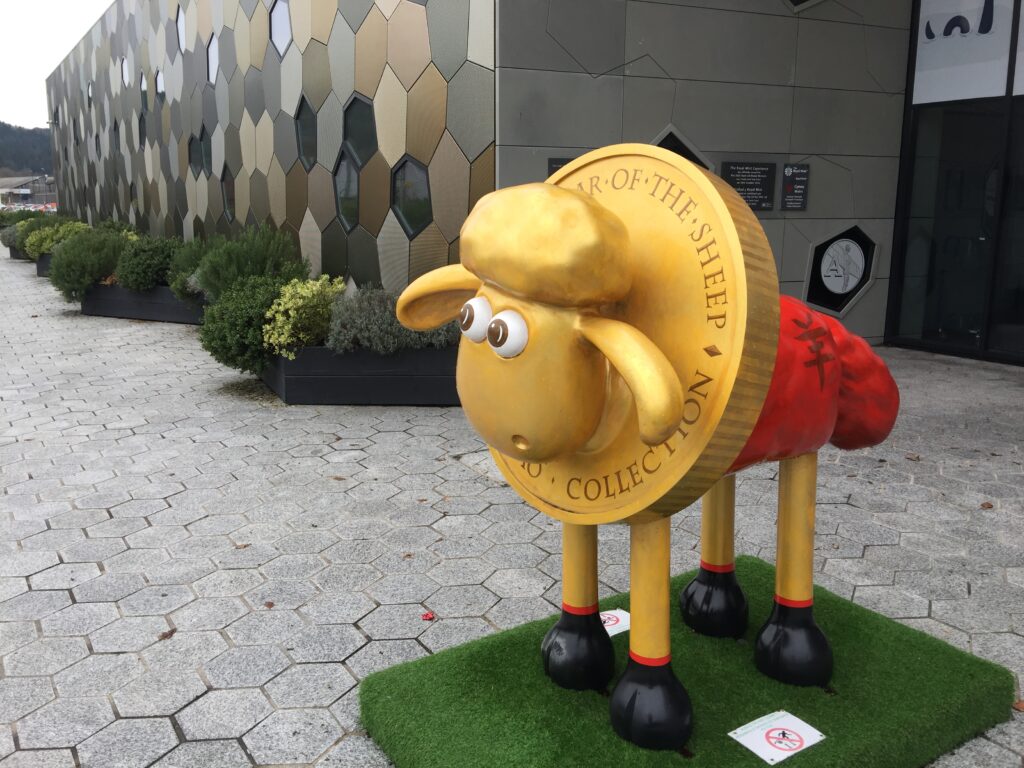The Royal Mint

WITH a history spanning more than 1,100 years, The Royal Mint, based in Llantrisant, south Wales, is a British maker of thoughtfully designed products and services as well as being the world’s leading export mint.
The Royal Mint makes original coin collections and gifts to celebrate special moments, and offers eye-opening experiences, investment opportunities and currency solutions.
Everything made there arises from centuries of original ideas and designs.
Every coin tells a story – from a rare gold Sovereign to a Peter Rabbit 50p coin.
As a world authority on precious metals, the Royal Mint has traded and made products in gold and silver for centuries. They now offer physical and digital precious metals investment opportunities.
The hugely popular Royal Mint Experience is the place to explore its 1,100-year history , offering tours, exhibitions, coin hunts and special events at this award-winning visitor attraction.

The Royal Mint is the largest and most technically advanced minting facility in the world. It makes more than 3.3 billion coins and blanks a year for in excess of 30 countries at the site in Llantrisant.
For hundreds of years, The Royal Mint was based primarily in London. In 1969, this changed when decimalisation and increased demand required greater space.
The need to rebuild The Royal Mint had been recognised in the 1950s, but it was the task of striking hundreds of millions of coins in readiness for decimalisation in 1971, while at the same time not neglecting overseas customers, which brought matters to a head.
In 1967, it was announced that a new Royal Mint would be built at Llantrisant, some 10 miles from Cardiff in rolling-green countryside on the edge of the Rhondda valley, thereby according with government policy of transferring industry from the capital to development areas.
Work began in August 1967 on the construction of two large concrete-clad buildings, one for the treatment of blanks and the other for the striking of those blanks. This first phase was opened by the Queen in December 1968, when she switched on the coining presses to begin production of decimal bronze coins.
As a local Cardiff MP, James Callaghan, who was Chancellor of the Exchequer when the decision was made, and therefore Master of the Mint, years later expressed no small amount of pride in having so prestigious an organisation as The Royal Mint located in south Wales. It was a welcome boost to the local economy and the Mint’s continued presence here has acted as a magnet for other businesses to the area.
During 1969 the new Mint, with its modern facilities for the bulk handling of blanks and the automatic feeding of coining presses, achieved weekly rates of output in excess of 50 million coins, or twice as much in a single week as had been produced in a year a century earlier. Blanks were supplied from Tower Hill as well as by outside contractors and, as planned, the Llantrisant site was responsible for the bulk of the stockpile of decimal bronze coins.
After the decimal change-over had been successfully resolved – a credit to the Mint and its staff – a second phase of building work was undertaken at Llantrisant. Its main feature was a large melting, rolling and blanking unit, in which was installed one of the most up-to-date foundries in the world for the continuous casting of non-ferrous metals.
Another substantial building provided accommodation for the engraving, die and assay departments and for the special section responsible for the striking of proof coins for sale to collectors. An office building and a police lodge were also constructed, and the new Mint came to occupy some 35 acres, a massive area compared to the four or so acres of the Tower Hill site.

Once the initial requirement for decimal coins had been satisfied, production was progressively transferred from Tower Hill to Llantrisant. Melting, rolling and blanking facilities were completed and commissioned in 1975 and with the new mint capable of the full range of minting activity, the last coin – a gold Sovereign – was struck in London in November of that year. The Tower Hill buildings were finally relinquished in 1980.
The Royal Mint Museum has one of the finest collections of coins and related material in the world. It is a collection about how money is made and how the Royal Mint has evolved over the last 1,100 years.
(sources include The Royal Mint, People’s Collection Wales)
Back to HOME PAGE